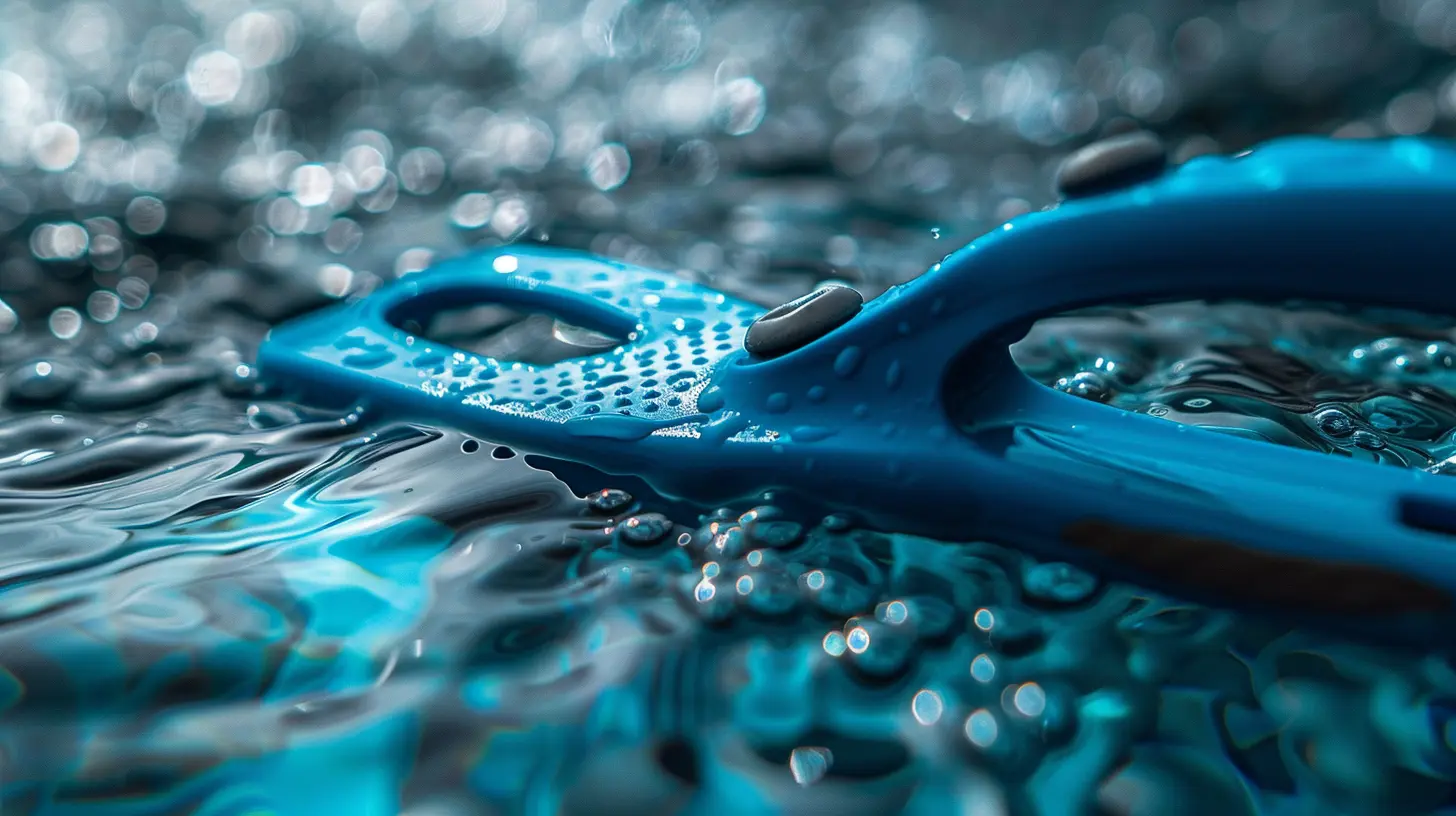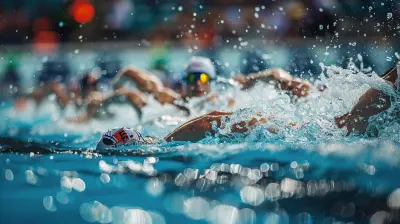How to Prevent and Treat Common Swimming Injuries
28 July 2025
Swimming is one of those magical full-body workouts that feels as free as flying underwater. Whether you're doing laps in the pool, training for a triathlon, or just splashing around with friends, it's an incredible way to stay fit and have fun. But, like with any sport, there's a flipside—swimming injuries.
Yep, even in the water, you're not completely safe from strains, sprains, and overuse injuries. And while swimming may be low-impact, it's super repetitive. That repetitive motion? It can be a sneaky saboteur.
So, what can you do to keep your strokes strong and your body injury-free? Let's dive in (pun totally intended) to how to prevent and treat common swimming injuries.
Why Swimming Injuries Happen in the First Place
Ever heard the phrase "too much of a good thing"? That’s swimming in a nutshell. Water gives us this illusion of weightlessness, which is great, but it also makes it really easy to overdo it. Most swimming injuries are caused by overuse—doing the same motion over and over until your body decides "nope."For example, think about the freestyle stroke. Your shoulders are rotating, your arms pulling, your head turning. Over time, if your technique is even a little off, or if you’re not properly conditioned, that movement becomes a recipe for injury.
And let's not forget that even casual swimmers can be injured. Poor form, zero warm-up, or jumping into an intense routine after a long break? Those are injury magnets.
Common Swimming Injuries (And How They Sneak Up On You)
Let’s talk about the culprits—those pesky injuries that creep in silently but can put a pause on your pool time.1. Swimmer’s Shoulder
This is the king (or queen) of swimming injuries. Swimmer’s shoulder isn’t one specific issue, but rather a catch-all term for shoulder problems caused by overuse of the rotator cuff. You might feel pain in the front or top of your shoulder that gets worse when you lift your arm.Why it happens: Repetitive overhead strokes, especially freestyle, backstroke, and butterfly, put stress on the rotator cuff muscles.
What it feels like: A dull ache that turns sharper with movement, especially after long swim sessions.
2. Lower Back Strain
If you swim the butterfly or even breaststroke, your back is under a good amount of strain. Tight hips and poor core strength can increase the chances of a pulled or strained lower back.Why it happens: Hyperextension of the spine during strokes, especially when core muscles aren’t actively engaged.
What it feels like: Achy, stiff back—especially right after a swim or the next morning.
3. Swimmer’s Knee
Also known as breaststroker’s knee, this is especially common in those who favor the breaststroke kick.Why it happens: The whip kick puts unnatural strain on the inner part of the knee, stressing the medial collateral ligament (MCL).
What it feels like: Sharp or nagging pain on the inside of the knee, often worsening with repeated breaststroke practices.
4. Neck Pain
Freestyle and backstroke demand a lot from the neck, especially when breathing techniques aren’t dialed in.Why it happens: Poor breathing technique—like over-rotating the head—can strain neck muscles.
What it feels like: Stiffness and soreness, especially when turning your head side to side.
5. Muscle Cramps
Ah, the infamous leg cramp mid-lap. Nothing worse than a sudden charley horse just as you’re getting into your groove.Why it happens: Dehydration, fatigue, or an imbalance in electrolytes.
What it feels like: A sudden, tight, painful contraction in the calf, foot, or thigh that might leave you hobbling out of the pool.
How to Prevent Swimming Injuries (So You Don't Have to Deal With All That)
Now for the good stuff. Prevention is always better than treatment, and the best part? It’s not rocket science. Just a few key habits can keep you safe and swimming smoothly.1. Warm Up (Yes, Even Before Swimming)
Jumping straight into laps without warming up is like trying to run a marathon without stretching—your muscles aren’t ready.What to do: Spend 5-10 minutes doing dynamic stretches or light cardio like jogging in place or arm circles. Get that blood flowing!
2. Focus on Technique (Form Over Speed)
Swimming with poor form is the fast track to injury. Even minor technical flaws can compound over time.Tip: Work with a coach or record yourself to identify areas needing improvement. Little tweaks in posture and stroke mechanics can make a huge difference.
3. Strengthen Your Core and Shoulders
Since the shoulders take a major beating, strengthening them (along with your core) helps create a more stable foundation.Try this: Add planks, shoulder presses, and resistance band workouts to your cross-training routine.
4. Don’t Skip Recovery
Rest days aren’t just for the lazy—they’re essential for healing!Include: Foam rolling, massages, gentle stretching, and quality sleep. It all adds up.
5. Cross-Train
Mix it up with yoga, pilates, or resistance training. Not only will it keep things interesting, but it also balances out the muscle groups that swimming might miss.6. Hydrate Like a Land Athlete
Just because you’re in water doesn’t mean you don’t need to drink it. Swimming = major sweat = fluid loss.Rule of thumb: Drink water before, during, and after your swim session.
7. Listen to Your Body
This one's simple but powerful. Pain is not normal. Soreness is fine—sharp, pinching, or nagging pain? That's your cue to rest.
How to Treat Swimming Injuries (When Prevention Slips)
Okay, we get it—sometimes, even with the best intentions, injuries happen. Here's how to treat them smartly.1. Rest and Ice
Inflammation is your body’s way of screaming, “Give me a break!” Start with rest and apply ice to the painful area for 15-20 minutes at a time, several times a day.2. Stretch and Mobilize
Once the pain starts to ease, light stretching can help heal and prevent stiffness.Go slow. Think gentle movements to regain your range of motion.
3. See a Physical Therapist
Don’t just tough it out. A PT can help identify the root cause, tailor a rehab program, and get you back to swimming stronger.4. Modify Your Training
Ease back into the water. Start with short, easy sessions, and avoid the stroke that triggered the injury until you’re fully healed.5. Use Supportive Gear
Tools like shoulder braces, ankle fins, or kickboards can help offload stress from injured areas while you still enjoy the water.6. Anti-Inflammatory Foods and Meds
Sometimes, a little help from ibuprofen or anti-inflammatory foods (think turmeric, berries, and leafy greens) can reduce pain and swelling.Bonus Tips for Long-Term Swimming Health
- Keep your training varied—don’t just grind out mindless laps.- Focus on breathing technique—good breathing reduces neck and shoulder strain dramatically.
- Track your workouts—logging swim sessions helps prevent overtraining.
When to See a Doctor
If your pain is consistent, worsening, or affecting your day-to-day activities, don’t wait it out. Chronic injuries are way harder to treat. Getting medical attention early can save your swim career—or your hobby.Wrap-Up: Respect the Water, Respect Your Body
Swimming is an amazing, lifelong sport. But just like anything else, it demands respect from your muscles and joints. With a little care, proper technique, and smart training, you can stay in the water and out of the doctor’s office.Injuries aren’t a life sentence—they’re just your body’s way of asking for a timeout. So warm up, train smart, listen to your body, and swim on!
all images in this post were generated using AI tools
Category:
SwimmingAuthor:

Everett Davis
Discussion
rate this article
1 comments
Ivy Velez
Understanding one's body is essential; prevention and recovery are as crucial as the sport itself.
August 13, 2025 at 2:54 AM

Everett Davis
Absolutely! Understanding your body is key to both preventing injuries and ensuring effective recovery in swimming.


